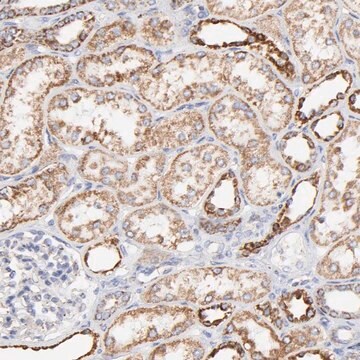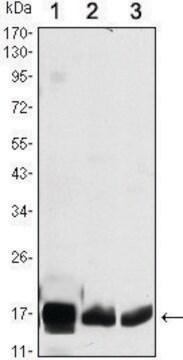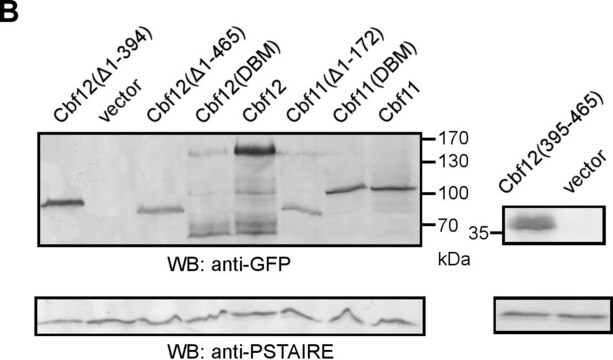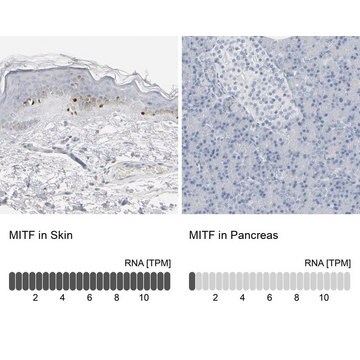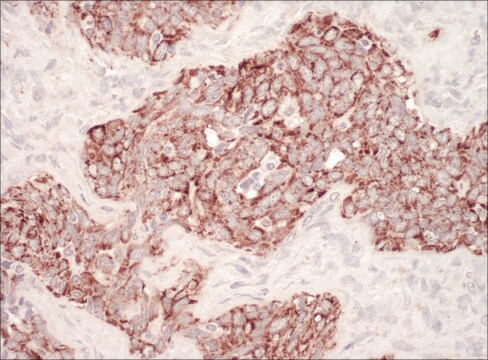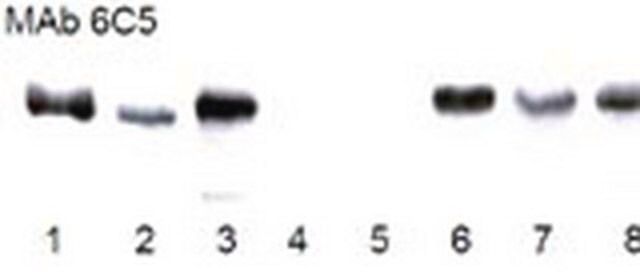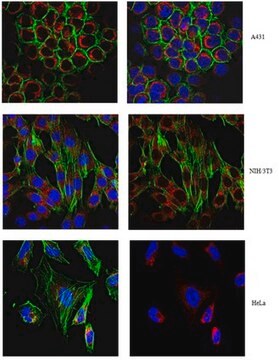AB10526
Anti-COX4 Antibody
from rabbit, purified by affinity chromatography
Sinonimo/i:
cytochrome c oxidase subunit IV isoform 1, cytochrome c oxidase subunit IV1, Cytochrome c oxidase polypeptide IV, cytochrome c oxidase subunit 4 isoform 1, mitochondrial
About This Item
Prodotti consigliati
Origine biologica
rabbit
Livello qualitativo
Forma dell’anticorpo
affinity isolated antibody
Tipo di anticorpo
primary antibodies
Clone
polyclonal
Purificato mediante
affinity chromatography
Reattività contro le specie
human
Confezionamento
antibody small pack of 25 μg
tecniche
immunohistochemistry: suitable (paraffin)
western blot: suitable
N° accesso NCBI
N° accesso UniProt
Condizioni di spedizione
ambient
Temperatura di conservazione
2-8°C
modifica post-traduzionali bersaglio
unmodified
Informazioni sul gene
human ... COX4I1(1327)
Descrizione generale
Specificità
Immunogeno
Applicazioni
Apoptosis & Cancer
Apoptosis - Additional
Qualità
Western Blot Analysis: 0.1 µg/mL of this antibody detected COX4 in 10 µg of human fetal skeletal muscle tissue lysate.
Descrizione del bersaglio
A non-specific band may be observed at ~58 kDa
Stato fisico
Stoccaggio e stabilità
Risultati analitici
Human fetal skeletal muscle tissue lysate
Altre note
Esclusione di responsabilità
Non trovi il prodotto giusto?
Prova il nostro Motore di ricerca dei prodotti.
Raccomandato
Certificati d'analisi (COA)
Cerca il Certificati d'analisi (COA) digitando il numero di lotto/batch corrispondente. I numeri di lotto o di batch sono stampati sull'etichetta dei prodotti dopo la parola ‘Lotto’ o ‘Batch’.
Possiedi già questo prodotto?
I documenti relativi ai prodotti acquistati recentemente sono disponibili nell’Archivio dei documenti.
Articoli
Loading controls in western blotting application.
Il team dei nostri ricercatori vanta grande esperienza in tutte le aree della ricerca quali Life Science, scienza dei materiali, sintesi chimica, cromatografia, discipline analitiche, ecc..
Contatta l'Assistenza Tecnica.

